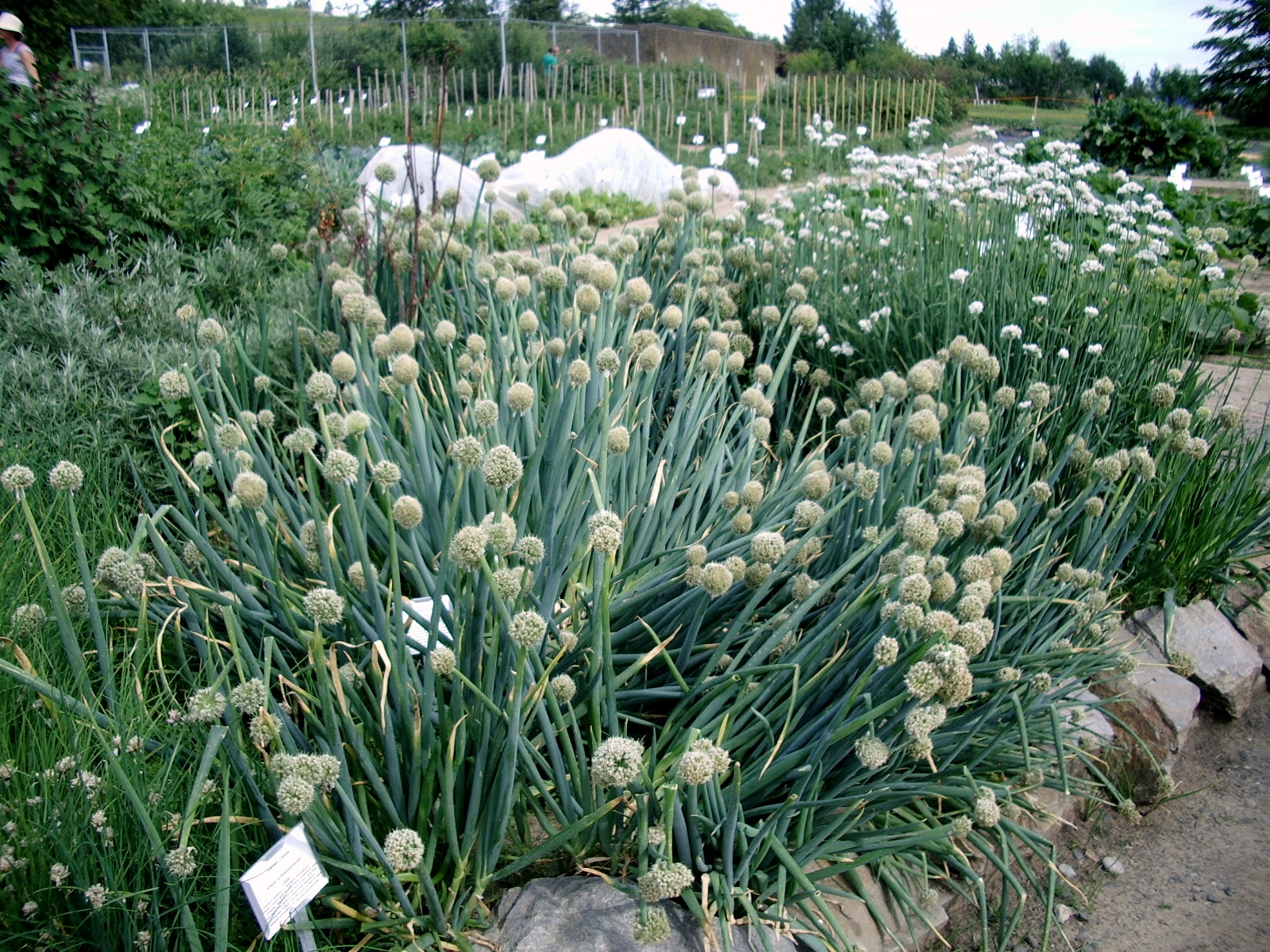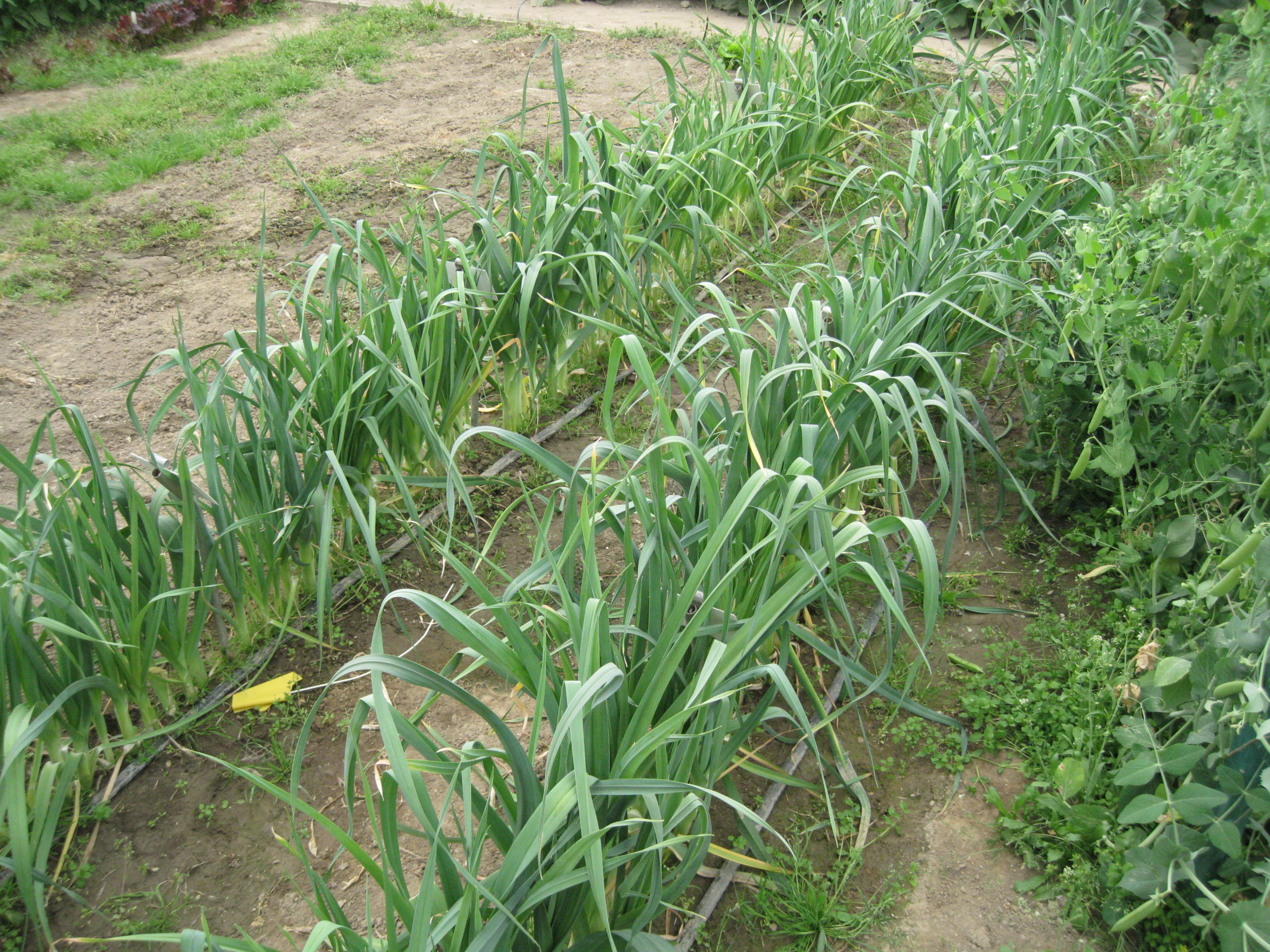Alliums are the vegetables we can’t do without–onions, garlic, chives, leeks, and shallots. They are so called because they belong to the genus Allium. We add them to pizza and pasta, soups and stir-fries, and Thai and Indian cuisine. So why not make some space for alliums in your garden this year?

Siberian Onions growing in the Georgeson Botanical Garden in Fairbanks, Alaska.
They are easy to grow but you must first know how to start them. There are several ways.
You can plant onions, shallots, leeks, chives, and Siberian onions from seed. Garlic, on the other hand, does not produce fertile seed so you must plant garlic cloves. Seeds should be started inside about 10 weeks before transplanting outdoors.
But seeds aren’t your only option. I don’t have the patience for starting alliums from seed so I buy sets or dormant plant bundles which can be planted directly outside and show visible, daily growth. Sets are dried, half-grown or baby onions. If growing onions, shallots, or leeks, you can grow them from semi-dried or dormant plants that come in bundles of about 50 or 60 plants. If kept cool and dry, you have up to one week before they need to be planted. You can also buy live transplants, but this is likely more expensive than sets or dormant plants.
Personally, I have not successfully grown large onions. I grow small to medium sized onions and use them throughout the summer, eating the leaves until they start to yellow. These are also known as scallions or green onions. I also store some medium-sized onions for use in the winter. If you want to grow a big onion, choose ‘long day’ varieties and those that mature in 90 days or less. A sunny, warm location will also help. Any variety will do for green onions–but I prefer red varieties.
Garlic and shallot cloves should be planted in the fall within a week or two of the first killing frost. Plant them about three inches deep and mulch with a few inches of straw to protect them from cold winter temperatures. Generally, hard-necked garlic grows best in Alaska which is more closely related to wild garlic. The defining characteristic of hard-necked garlic is the flower stalks or scapes. Cut and eat the garlic scapes after they curl–they are like a chive except taste like garlic.

Leeks nearly ready for harvest.
Plant leeks from seed, dormant plants, or transplants in the spring. Potato-leek soup is well-known but only one of many ways to use this allium. Leeks have a nice mild, flavor. There are two reasons that I don’t generally grow leeks. Their crevices are ridiculously difficult to clean and much of the plant, the tough green leaves are inedible. Well if you’re industrious enough, you can use them in stock, but I am not that energetic.
Siberian onions and chives are hardy perennials in Alaska. I use scissors to harvest about half of the leaves and eat them much like a green onion. I leave enough foliage for a healthy plant the following year. You can start them from seed or purchase live transplants.
Generally speaking, alliums have moderate to high fertilizer and water needs. They benefit from well-drained soil with high organic matter content. They don’t compete well with weeds–so keep them in check.
If you haven’t grown alliums before, try them! You’re guaranteed to find at least one allium you like and they don’t take up much space. Plus they’ll make a nice addition to just about everything you eat this summer–some people even eat garlic ice cream!
Here is a quick guide for the various ways you can start different types of Alliums.
- Onions: seeds, transplants, bundle of dormant plants, cloves/sets
- Shallots: seeds, transplants, bundle of dormant plants, cloves/sets
- Garlic: cloves/sets
- Leeks: seeds, transplants, bundle of dormant plants
- Chives: seeds, transplants, perennial
- Siberian onions: seeds, transplants, perennial
Previously published in the Fairbanks Daily Newsminer May 30, 2015.
Fantastic looking leeks!!
Have any tips for growing them?
Where can I get Siberian onion seeds?
I’m looking for Siberian multiplying onions. Where can I buy some sets, seeds ect. Thznks
Good question. I don’t know off hand but I would say a google search will bring up some Online greenhouses or you can try a local greenhouse. Just make sure the Online greenhouse you are shopping from will ship to you (assume you are in Alaska?).